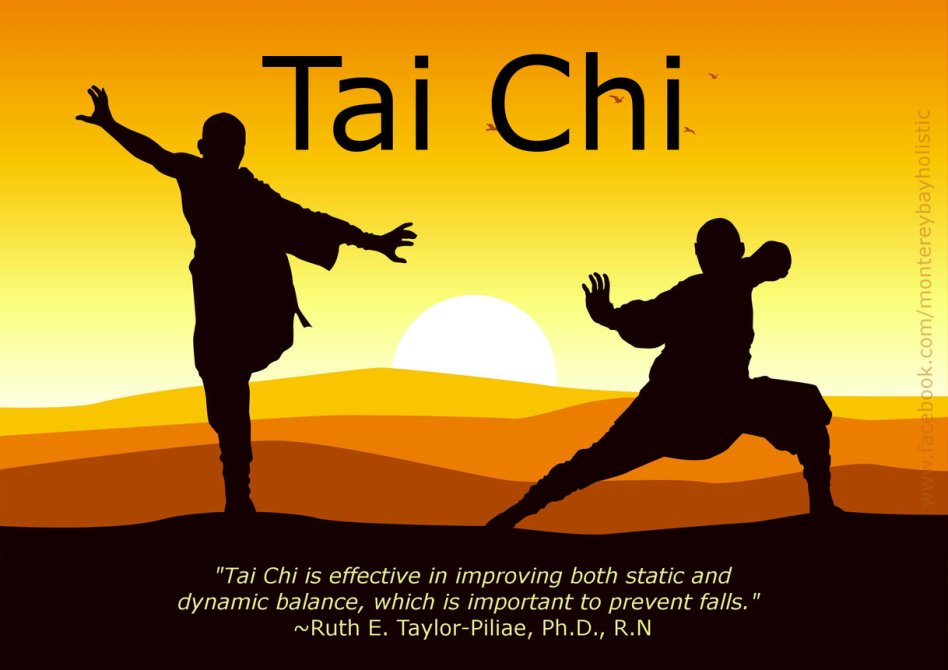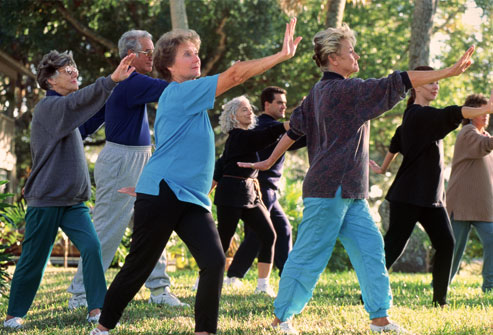Is Tai Chi effective with stroke survivors? Does Tai Chi help with balance and stability?

WHY IS TAI CHI IMPORTANT TO STROKE SURVIVORS?
Stroke survivors are very much prone to falls after stroke. Some statistics say that stroke survivors are likely to experience seven times as many falls each year than healthy adults. Falls can result in social isolation, depression dependence, and cause fractures, limited mobility and increase a fear of falling. Tai Chi can help bring increased mobility, balance and control. This is essential to stroke survivors.
WHAT IS TAI CHI?
Tai chi is an ancient form of exercise, about 2,000 years old. At one time more than 100 separate movements or postures were recorded. It is a physical discipline that involves a continuous series of controlled, most often slow movements. These movements are designed to improve physical and mental well-being. Tai Chi is also called t’ai chi ch’uan, or tai chi chuan.
It is estimated that more than 10 million people practice some type of t’ai chi every day in China. Currently in modern-day Tai Chi practice, there are two popular versions, of 18 movements and 37 movements respectively. Tai Chi is the one of the most popular forms of exercise in the world. Tai Chi students (or “players,” as they are called in China) often wear loose, comfortable clothing and either go barefoot or wear only socks or soft shoes on the feet. People in China usually practice Tai Chi outdoors in the morning, whereas people in the United States attend Tai Chi classes indoors.

Tai Chi classes typically start with a few minutes of standing meditation. This calms the mind, and helps participants to gather Chi or energy. Students then begin with warm-up exercises, and practice particular postures or forms. Yang-style Tai Chi, as practiced in the study, is the most popular of five styles used in the United States.
WHAT DOES THE RESEARCH TELL US?
According to the latest research presented at the American Stroke Association‘s International Stroke Conference 2013, Tai Chi may help to reduce falls in stroke survivors.
In the report from the American Stroke Association, out of the three control groups, those stroke survivors practicing Tai Chi had fewer falls than the other two groups of stroke survivors: those receiving usual care or those participating in a national fitness program for Medicare-eligible adults called SilverSneakers.®

Researchers recruited 89 stroke survivors – most of whom had ischemic strokes. The study was a randomized prospective study conducted outside of a hospital setting. The average age of participants was 70 years old. Forty-six (46) percent were women. Most of the participants were college educated, Caucasian, and living in or around Tucson, Arizona. The majority of the participants had had a stroke within three years prior to the research study.
The research study group was divided into three control groups: 1) 30 practiced Tai Chi, 2) 28 people took part in usual care and 3) 31 people participated in SilverSneakers®. The Tai Chi and SilverSneakers® groups included specific exercise classes lasting one hour, three times every week for twelve weeks. The usual care group received a weekly phone call and given written information about how they could participate in a community physical exercise activity.
During the twelve-week period, there were 34 reported falls in participants’ homes mainly from slipping or tripping: five falls in the Tai Chi group; 15 falls in the usual care group; and 14 falls in the Silver Sneakers group. Four people asked for medical treatment.
According to the principal researcher, Ruth E. Taylor-Piliae, Ph.D., R.N., and assistant professor at the University of Arizona College of Nursing in Tucson, Arizona,
“Tai Chi is effective in improving both static and dynamic balance, which is important to prevent falls. Tai Chi is readily available in most U.S. cities and is relatively inexpensive.”
The results of this study were significant. More research is needed to study the benefits of Tai Chi which can include: better balance, improved strength and balance, flexibility, endurance, increased energy, a sense of well-being, reduced anxiety.
_______________________________

This article is written by Jean Voice Dart, M.S. Special Education from Illinois State University. Jean is a published author and has written hundreds of health articles as well as hosting a local television program, “Making Miracles Happen.” She is a Registered Music Therapist, Sound Therapist, and Master Level Energetic Teacher, and is the Executive Director, founder and Health and Wellness Educator of the Monterey Bay Holistic Alliance. The Monterey Bay Holistic Alliance is a registered 501 (c) 3 nonprofit health and wellness education organization. For more information about the Monterey Bay Holistic Alliance contact us or visit our website at www.montereybayholistic.com.
Disclaimer:The Monterey Bay Holistic Alliance is a charitable, independent registered nonprofit 501(c)3 organization and does not endorse any particular products or practices. We exist as an educational organization dedicated to providing free access to health education resources, products and services. Claims and statements herein are for informational purposes only and have not been evaluated by the Food and Drug Administration. The statements about organizations, practitioners, methods of treatment, and products listed on this website are not meant to diagnose, treat, cure, or prevent any disease. This information is intended for educational purposes only. The MBHA strongly recommends that you seek out your trusted medical doctor or practitioner for diagnosis and treatment of any existing health condition.
Original article and pictures take s0.wp.com site
Комментариев нет:
Отправить комментарий